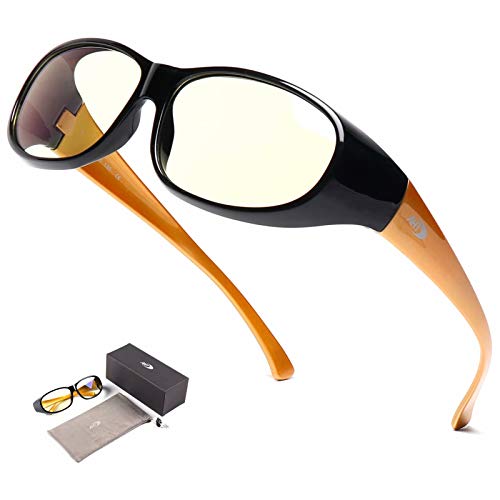

Transitions XTRActive lenses have slight tint indoors to keep your eyes comfortable when exposed to harsh lighting (fluorescent lights, digital devices). Transitions XTRActive (Transitions Optical) - These lenses were developed for wearers who are light-sensitive indoors and desire a darker lens when driving and outdoors. Gen 8 lenses get darker and become clear again quicker - three minutes less for fade back than Transitions Signature lenses with Chromea7 technology and 30 percent less time for the lenses to activate. Transitions Gen 8 (Transitions Optical) - Transitions Gen 8 lenses, introduced in the United States in July 2019, are the fastest light-adaptive Transitions lenses available. Popular brands of photochromic lenses sold in the United States include: Of reducing the need to carry a pair of prescription sunglasses with you everywhere you go. Though photochromic lenses cost more than clear eyeglass lenses, they offer the convenience AR coating allows more light to pass through photochromic lenses for sharper vision in low-light conditions (such as driving at night), and eliminates bothersome reflections of sunlight and other light from the backside of the lenses in bright conditions. SEE RELATED: How photochromic lenses workįIND A DOCTOR: Need an eye exam or new glasses? Find an eye doctor near you.Īdding anti-reflective coating to photochromic lenses enhances their performance even further. Polycarbonate is the safest lens material for kids, providing up to 10 times the impact resistance of other lens materials. An added benefit of photochromic lenses is that they shield your eyes from 100 percent of the sun's harmful UVA and UVB rays.īecause a person's lifetime exposure to sunlight and UV radiation has been associated with cataracts later in life, it's a good idea to consider photochromic lenses for children's eyewear as well as for eyeglasses for adults. Photochromic eyeglass lenses are available in nearly all lens materials and designs, including high-index lenses, bifocals and progressive lenses. Recent advancements in technology allow some photochromic lenses to activate with both UV and visible light, providing some darkening behind the windshield. Photochromic lenses typically will not darken inside a vehicle because the windshield glass blocks most UV rays.

Because UV rays penetrate clouds, photochromic lenses will darken on overcast days as well as sunny days. The molecules responsible for causing photochromic lenses to darken are activated by the sun's ultraviolet radiation.

HAVING DIFFICULTY ADJUSTING TO BRIGHT LIGHT? Ask your eye doctor if photochromic lenses (in glasses or contacts) will help. Johnson & Johnson teamed up with Transitions Optical to develop Acuvue Oasys with Transitions, the first light-adaptive contact lens.

Because of this, some people - including some eye care practitioners - refer to photochromic lenses as "transitions lenses" or "transition lenses." But there are other brands of photochromic lenses available as well.Ĭontact lenses now also can come with photochromic technology. The most popular brand of photochromic eyeglass lenses sold in the United States is Transitions Lenses. Other terms sometimes used for photochromic lenses include "light-adaptive lenses," "light intelligent" and "variable tint lenses." Photochromic lenses are eyeglass lenses that are clear (or nearly clear) indoors and darken automatically when exposed to sunlight.


 0 kommentar(er)
0 kommentar(er)
